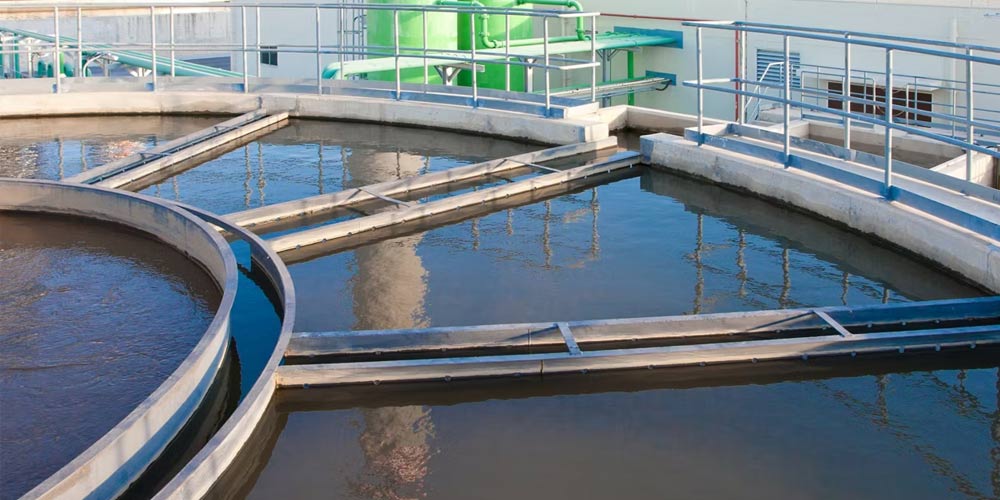ჩამდინარე წყლების გამწმენდი პროცესის ერთ-ერთი მთავარი ეტაპია შეწონილი მყარი ნაწილაკების კოაგულაცია და დალექვა, პროცესი, რომელიც ძირითადად ეფუძნება ქიმიკატებს, რომლებსაც ე.წ.ფლოკულანტებიამაში პოლიმერები, მაგალითად, PAM და პოლიამინები, სასიცოცხლო როლს ასრულებენ. ეს სტატია დეტალურად განიხილავს პოლიმერული ფლოკულანტების გავრცელებულ ანალიზს, პოლიმერების გამოყენებას ფლოკულანტებად ჩამდინარე წყლების გამწმენდ სისტემებში და მათ ფუნქციებს.
რა არის ხშირად გამოყენებულიპოლიმერული ფლოკულანტები?
ხშირად გამოყენებული პოლიმერული ფლოკულანტებია კათიონური პოლიმერები, ანიონური პოლიმერები და არაიონური პოლიმერები. ეს პოლიმერები შეიძლება მიღებულ იქნას სხვადასხვა სინთეზური მეთოდით და აქვთ სხვადასხვა კათიონური და განშტოებული სტრუქტურები. პრაქტიკულ გამოყენებაში, საუკეთესო დამუშავების ეფექტის მისაღწევად, აუცილებელია შესაბამისი პოლიმერული ფლოკულანტების შერჩევა ჩამდინარე წყლების სპეციფიკური პირობების მიხედვით. PAM, polyDADMAC, ფართოდ გამოიყენება სამრეწველო ჩამდინარე წყლების დამუშავებაში. პოლიაკრილამიდი მსოფლიოში ყველაზე ფართოდ გამოყენებული ფლოკულანტია. ეს წყალში ხსნადი პოლიმერები სინთეზურია და შეიძლება შეიქმნას კონკრეტული გამოყენებისთვის სხვადასხვა მოლეკულური წონით, სიბლანტით, სხვადასხვა დამუხტვის ხარისხით, სხვადასხვა ფორმით, როგორიცაა ნაწილაკები, ემულსიები და ა.შ. PolyDADMAC ფართოდ გამოიყენება ონკანის წყალში, ნედლი წყლის ფლოკულაციაში, ნალექის დეჰიდრატაციაში, ქაღალდის ინდუსტრიაში და ბეჭდვისა და საღებავების ინდუსტრიაში.
გამოყენებაფლოკულანტები ჩამდინარე წყლების გამწმენდ ნაგებობებში
ჩამდინარე წყლების გამწმენდის მთავარი მიზანია წყლიდან ისეთი დამაბინძურებლების მოცილება, როგორიცაა შეწონილი მყარი ნაწილაკები, გახსნილი ორგანული ნივთიერებები და კოლოიდური ნაწილაკები, წყლის ხარისხის გასაუმჯობესებლად. ამ პროცესში ფლოკულანტები სასიცოცხლო როლს ასრულებენ. ფლოკულანტების გამოყენებით, წყალში არსებული პაწაწინა ნაწილაკები და კოლოიდური ნივთიერებები შეიძლება აგლომერირდეს უფრო დიდ ფლოკებად, რომელთა მოცილება უფრო ადვილად შეიძლება დალექვით ან ფილტრაციით. ამან შეიძლება არა მხოლოდ გააუმჯობესოს წყლის ხარისხი, არამედ გააუმჯობესოს გამწმენდი ნაგებობების ეფექტურობა და შეამციროს გამწმენდი ხარჯები.
რატომ შეიძლება პოლიმერებისგან ფლოკულანტების წარმოქმნა?
პოლიმერების გამოყენება ფლოკულანტებად ძირითადად მათი მაღალი მოლეკულური წონისა და მრავალშრიანი სტრუქტურის გამოა შესაძლებელი. ეს თვისებები პოლიმერს საშუალებას აძლევს უკეთ შეიწოვოს ნაწილაკოვან ნივთიერებაზე, წარმოქმნას უფრო დიდი ფლოკები, რომლებიც სწრაფად ილექება. გარდა ამისა, პოლიმერებს შეუძლიათ ნაწილაკებს შორის ელექტროსტატიკური მოგერიების აღმოფხვრა მუხტის ნეიტრალიზაციის გზით, რაც ნაწილაკებს საშუალებას აძლევს მიუახლოვდნენ და აგლომერირდნენ ერთმანეთთან.
პოლიმერების მოქმედების მექანიზმი ჩამდინარე წყლების გამწმენდში
პოლიმერების, როგორც ფლოკულანტების, მოქმედების მექანიზმი შეიძლება დაიყოს სამ ეტაპად: მუხტის ნეიტრალიზაცია, დამაკავშირებელი ფლოკულაცია და ბადისებრი დაჭერა. პირველ რიგში, პოლიმერი გამორიცხავს ნაწილაკებს შორის ელექტროსტატიკურ მოგერიებას მუხტის ნეიტრალიზაციის გზით, რაც ნაწილაკებს მიახლოების საშუალებას აძლევს. შემდეგ პოლიმერი აკავშირებს ნაწილაკებს ერთმანეთთან დამაკავშირებელი ფლოკულაციის გზით უფრო დიდი ფლოკების შესაქმნელად. და ბოლოს, ეს ფლოკები შემდგომში აგრეგირდება და ილექება წყალში ბადეების ზერელე მოქმედების გზით.
ფაქტორები, რომლებიც გავლენას ახდენენ პოლიმერების ეფექტურობაზე ჩამდინარე წყლების გამწმენდში
ჩამდინარე წყლების პოლიმერული დამუშავების ეფექტურობაზე გავლენას ახდენს მრავალი ფაქტორი, მათ შორის პოლიმერის ტიპი, დოზირება, pH მნიშვნელობა, ტემპერატურა, მორევის სიჩქარე და ა.შ. მათ შორის, პოლიმერის ტიპი და დოზირება ერთ-ერთი ყველაზე მნიშვნელოვანი ფაქტორია. სხვადასხვა ტიპის პოლიმერებს აქვთ განსხვავებული მუხტის თვისებები და მოლეკულური წონის განაწილება, ამიტომ საუკეთესო დამუშავების ეფექტის მისაღწევად აუცილებელია სხვადასხვა ჩამდინარე წყლებისთვის შესაბამისი პოლიმერის ტიპისა და დოზირების შერჩევა. გარდა ამისა, ისეთი ფაქტორები, როგორიცაა pH მნიშვნელობა, ტემპერატურა და მორევის სიჩქარე, ასევე გავლენას ახდენს დამუშავების ეფექტურობაზე და ოპტიმალური პირობები უნდა განისაზღვროს ექსპერიმენტების საშუალებით.
პოლიმერები მნიშვნელოვან როლს ასრულებენ, როგორც ფლოკულანტები ჩამდინარე წყლების გამწმენდ პროცესში. პოლიმერების მოქმედების მექანიზმისა და გავლენის ფაქტორების სიღრმისეული გაგება შეიძლება უზრუნველყოფდეს მნიშვნელოვან თეორიულ მხარდაჭერას და პრაქტიკულ ხელმძღვანელობას ჩამდინარე წყლების გამწმენდი პროცესების ოპტიმიზაციისა და გამწმენდი ეფექტურობის გასაუმჯობესებლად. მომავალში, გარემოს დაცვის მოთხოვნების უწყვეტი გაუმჯობესებისა და მეცნიერებისა და ტექნოლოგიების უწყვეტი განვითარების კვალდაკვალ, ითვლება, რომ პოლიმერების გამოყენება ჩამდინარე წყლების გამწმენდ პროცესში უფრო ფართო და სიღრმისეული იქნება.
გამოქვეყნების დრო: 2024 წლის 30 აგვისტო


